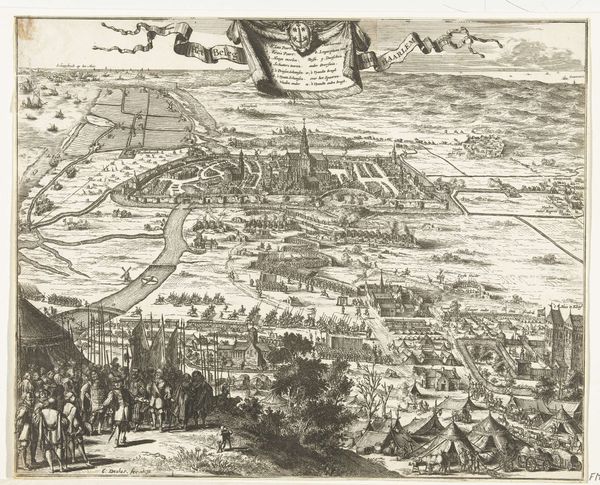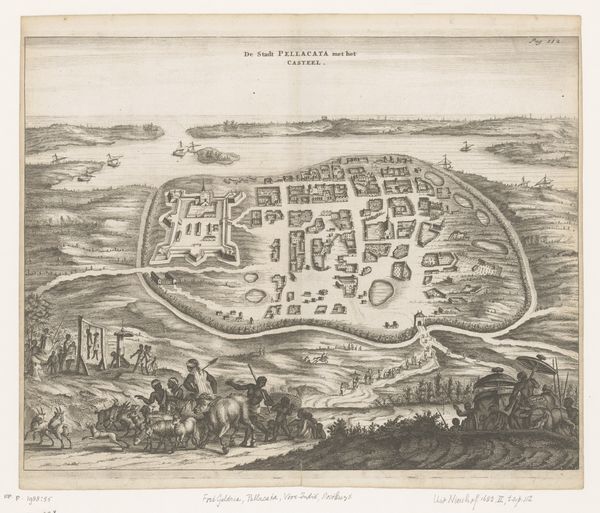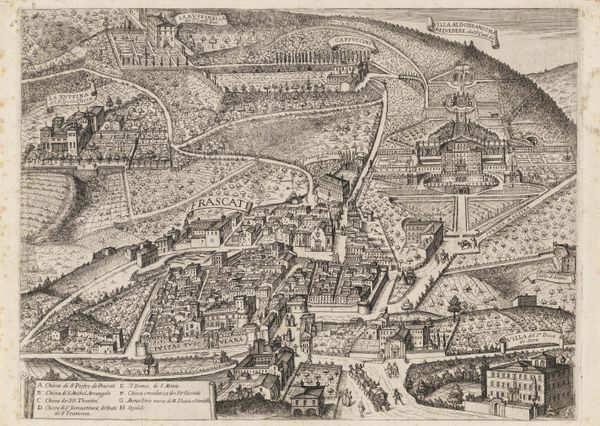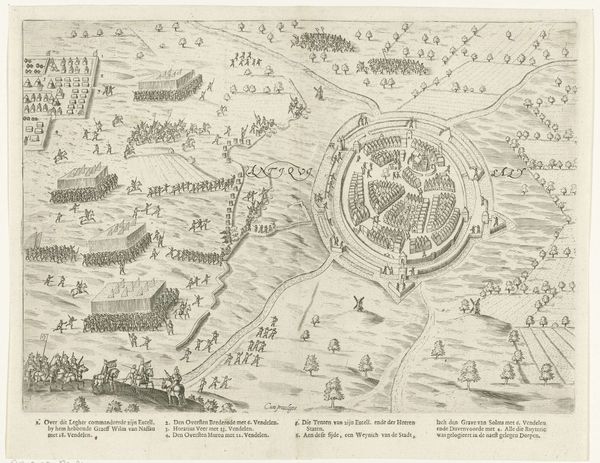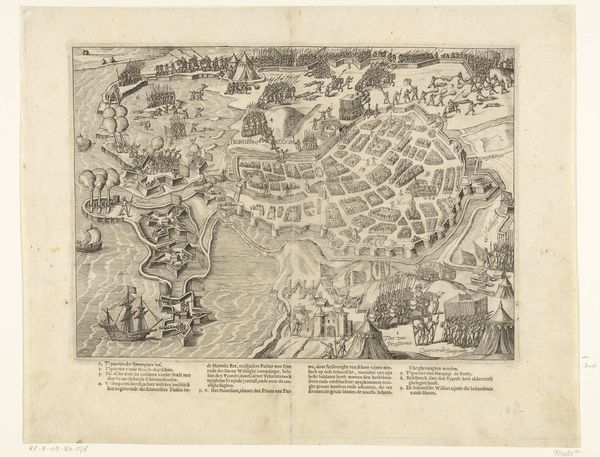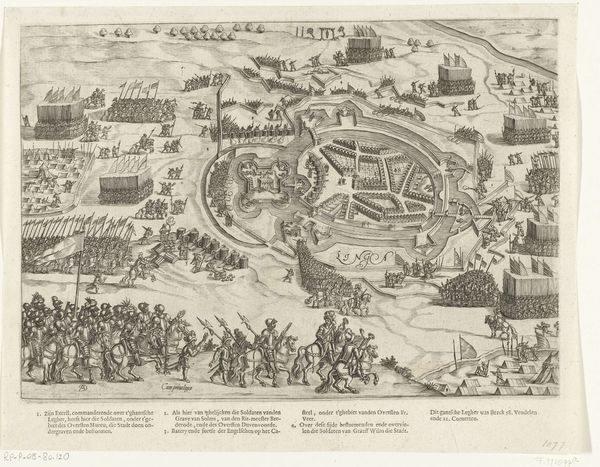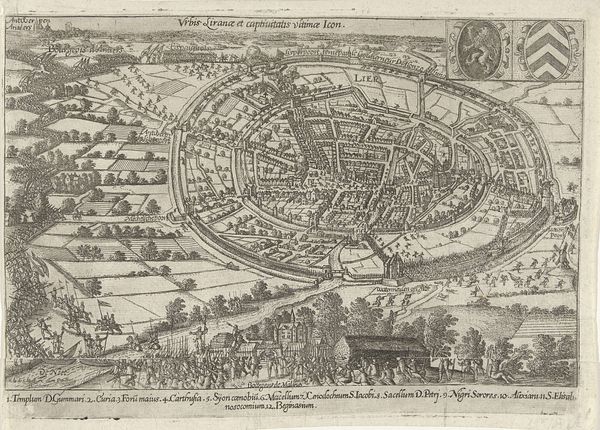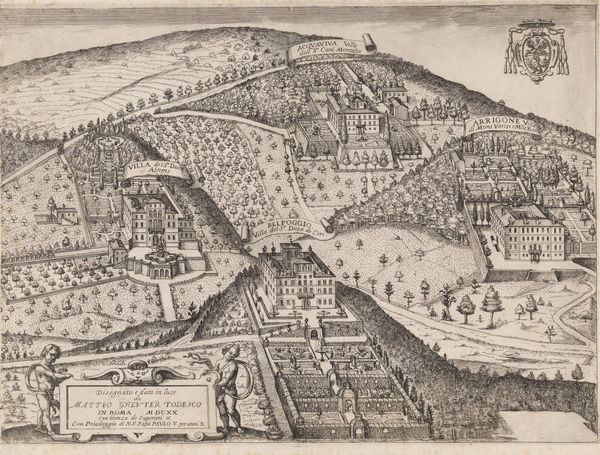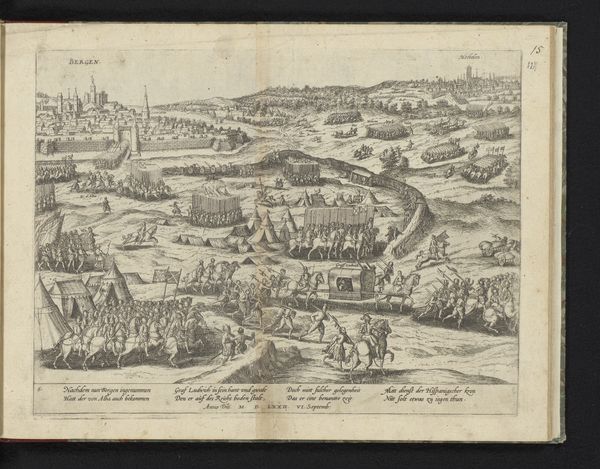
print, engraving
# print
#
pen sketch
#
pencil sketch
#
old engraving style
#
landscape
#
pen-ink sketch
#
pen work
#
cityscape
#
history-painting
#
academic-art
#
engraving
Copyright: Rijks Museum: Open Domain
Curator: Here we have a detailed print titled “Beleg van Haarlem, 1572-1573,” created in 1626 by Cornelis van Kittensteyn. It’s currently housed here at the Rijksmuseum. Editor: It’s intensely busy. My initial thought is just a visual overload, an orchestrated chaos if that makes any sense? Curator: Absolutely. Consider that engravings such as these served multiple purposes; beyond pure aesthetics, they acted as historical records and even propaganda. Look at the symbolism of siege warfare prevalent in Northern Renaissance art, its evocation of a people's perseverance in crisis. Editor: The details are so crisp. The tents, ships, and the city layout give an ant’s-eye kind of feel. The work captures a historical bird’s-eye perspective but also embodies this incredible density of events all at once. What's that about? Curator: Engravings often deployed perspective not as pure representation, but symbolically, showing spatial relations reflecting hierarchies of power and information deemed important for viewers of that period. What's more significant might be higher in the picture plane, literally. Editor: Hmm. The strategic, comprehensive layout contrasts sharply with the implied human drama happening below, within the city itself, doesn't it? I'm intrigued by that tension between planning and suffering. Almost detached, this representation of war. Curator: Yes, the detailed cartography normalizes war. It attempts to objectify chaos into ordered space; look how similar sieges by Italian artists against different cultures echo here-- suggesting a shared symbolic understanding throughout Renaissance culture. Consider, for example, the visual continuity present over decades. Editor: This really pushes the idea of image as something not merely depicting an event, but shaping the viewer's interpretation. A historical "snapshot", sure, but designed to elicit certain emotions, right? I am impressed by the extent and ambition within print medium. Curator: It served not only to document but memorialize and encourage patriotism. Editor: Leaving me pondering the complex interaction of strategy, chaos, and artistic expression and intent within these seemingly straightforward historical records. Curator: Precisely, that push-and-pull encapsulates its timeless significance.
Comments
No comments
Be the first to comment and join the conversation on the ultimate creative platform.

